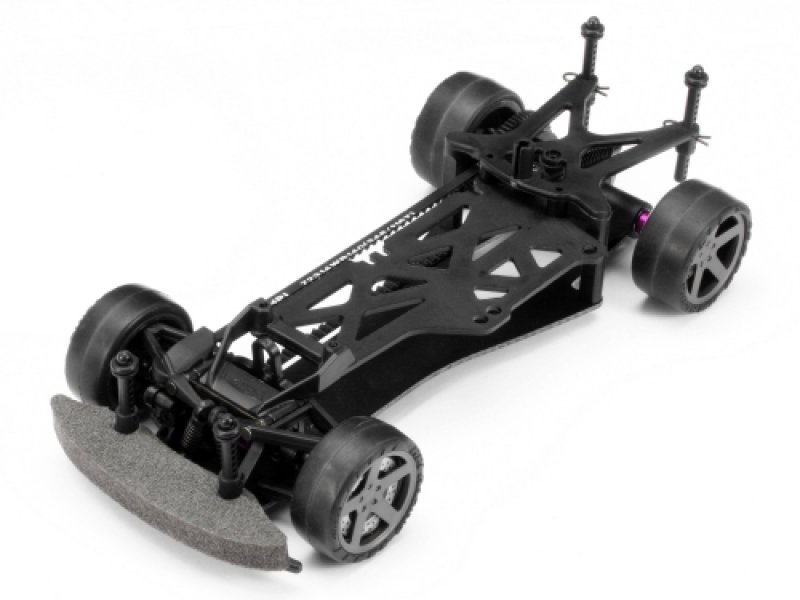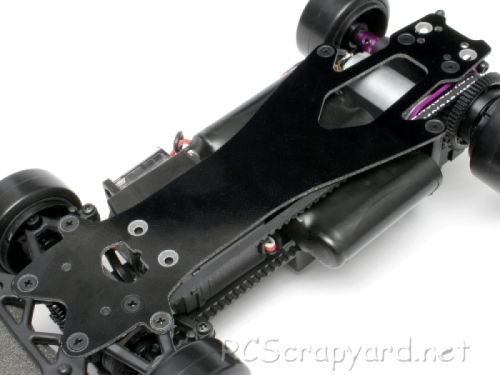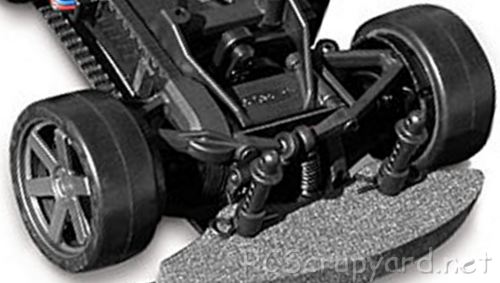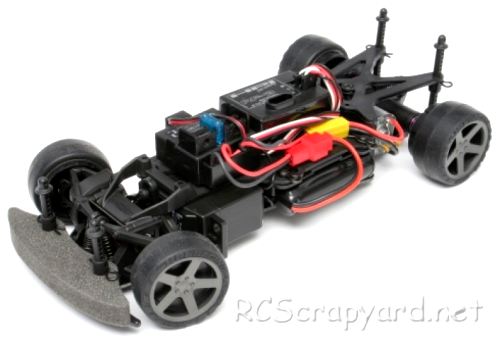

|


|
|
1/18 Scale Electric Rally/Touring Car:
HPI Micro RS4 Sport - Nissan Skyline R34 GT-R - # 621 / # 650 / # 645 / # 640 (Radio Controlled Model Review)History and Info:
Introduced by HPI (Hobby Products International) in 2007, the Nissan Skyline R34 GT-R, based on the Micro RS4 Sport Touring Car chassis, was available as an unassembled kit - # 621 - or factory assembled RTR - # 650 / # 645 / # 640 - with a 380 Motor, ESC and TF-3 Radio System. The model was designed to accept standard sized 180 Motors, Steering Servos, Receivers and ESC, and run times up to 40 minutes could be achieved with 4 x AA or AAA Batteries. A number of other bodyshell options were available (Check out our HPI Archive).
▼ Scroll Down for More Images ▼
|








|
|
|

★ HPI Micro RS4 Sport - Nissan Skyline R34 GT-R Chassis ★

★ HPI Micro RS4 Sport - Nissan Skyline R34 GT-R Chassis ★

★ HPI Micro RS4 Sport - Nissan Skyline R34 GT-R Chassis ★

★ HPI Micro RS4 Sport - Nissan Skyline R34 GT-R Chassis ★

|
Buying a Used HPI Micro RS4
|
|
Manufacturers and Brands Catalogued and Listed by RC-Scrapyard.
At present, the RC Model Manufacturers, Brands and Distributors covered by us are: ABC Hobby, Academy, Acme Racing, Agama Racing, Amewi, Ansmann Racing, ARRMA, Team Associated, Atomic RC, Axial, AYK, Bolink, BSD Racing, Capricorn, Carisma, Carson, Caster Racing, Cen, Corally, Custom Works, Durango, Duratrax, ECX - Electrix, Exceed RC, FG Modellsport, FS-Racing, FTX, Fujimi, Gmade, GS-Racing, Harm, HBX, Helion, Heng Long, Himoto Racing, Hirobo, Hitari, Hobao, Hong-Nor, Hot Bodies, HPI, HSP, Intech, Integy, Jamara, JQ Products, Kawada, Kyosho, Losi, LRP, Maisto, Mardave, Marui, Maverick, MCD Racing, Megatech, Mugen, New Bright, Nichimo, Nikko, Nkok, Ofna, Pro-Pulse, Protech, PTI, RC4WD, Redcat Racing, RJ-Speed, Robitronic, Schumacher, Seben, Serpent, Smartech, Sportwerks, Step-Up, Tamiya, Team-C Racing, Team Magic, Thunder Tiger, Tomy, Top Racing, Traxxas, Trinity, Tyco, Vaterra RC, Venom, VRX Racing, WLToys, X-Factory, Xmods, Xpress, Xray, XTM, Yankee RC, Yokomo, ZD Racing and Zipzaps. |
|
Hints, Tips and Information
Bearing Seals
If you were to ask anyone with a modicum of experience in RC, they will tell you that the best modification you can make to a basic RC model, is to add a set of ball bearings. |
|
Hints, Tips and Information Ball Differentials
Ball differentials were developed in the late 1980s to replace the high friction Gear differentials. Mainly used on Touring Cars, Pan Cars and Formula One Cars, Ball Differentials are designed to be totally frictionless and smooth in action to provide effortless drive to the wheels on cornering, where the inside wheels must rotate slower than the outside wheels for controlled stability.
|
|
RC Models:
|
Radio & Motors: |
Other
Accessories: |